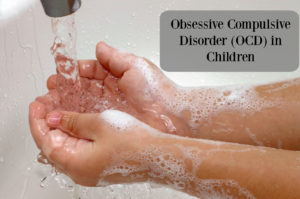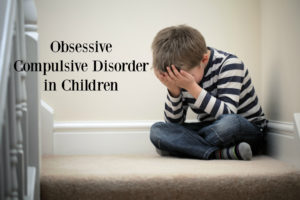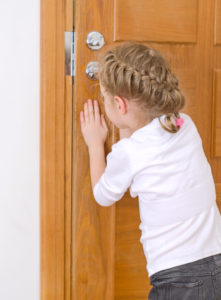Obsessive Compulsive Disorders (OCD) In Children
I will write about many disorders that effect both adults and children. This one comes first because it is personal for me. My oldest child and I both have OCD. I recall the concerns that flowed through my mind before the moment of clarity when I realized what was was going on. Once I realized that it was OCD there was some relief in knowing that I understood now, and that I knew how to handle the situation…in my case because I too have OCD and could totally understand. At times it is such a great relief to me that I understand so well what he is experiencing. I hope to bring some of that comfort to other parents.
Obsessive Compulsive Disorder (OCD) is a disorder that is not often thought of in children. As a result it often goes undiagnosed or misdiagnosed. Most often it is confused with being a conduct disorder, ADHD, or Aspergers disorder.
In our family the first manifestation we saw in our oldest son were total meltdown tantrums if the slightest deviation occurred in his bedtime routine. He was 2 and a half at the time. For awhile the slightest change in his routine sent him into hysterics and he insisted on starting the process over from the beginning. At first I thought he was overly tired…then I thought maybe Aspergers. Aspergers never fit though he was just so socially aware and verbal.
It wasn’t until he was 5 and I got a more classic OCD presentation from him that it clicked. At that point in hind sight I could see clearly what that behavior was at the age of 2.
OCD in children is not particularly rare occurring in about 1% of children. Many adults with OCD report symptoms in their youth that went unrecognized and caused significant social, emotional, and educational distress.
Research has found that in children with OCD there is a strong correlation to a close relative who has OCD. In fact research has found that the younger a child is when symptoms of OCD begin to manifest the stronger the likelihood that it is a disorder that is experienced by members of their immediate family. This supports the relatively recent recognition of OCD being a highly heritable disorder. While the heritability of OCD is not a surprise to many mental health professionals it is not yet known what chromosome is the link.
In our family the chain of heritability runs right through my grandmother to both of her sons. One of which was my father who shared that gift with me, then I passed right on along to my oldest son. Truly the family gift that keeps on giving.
While OCD is usually inherited there is a disorder related to infection and the use of antibiotics in children called P.A.N.D.A.S. to read more about PANDAS.

Closeup of a child’s soapy hands
What is OCD
Obsessive Compulsive Disorder is not what people flippantly refer to it as in popular culture. “I’m all OCD about keeping my car super clean.” “She’s totally OCD about her purse matching her shoes.” Really that all kind of makes me cringe.
OCD is a disorder that involves intrusive thoughts, fears, or concerns (Obsessions) and actions (Compulsions) that are taken to quiet those obsessions.
The obsessions are repetitive and out of the control of the individual experiencing them. The compulsions feel equally out of control. They are experienced as acts that must happen to quiet the mind.
While compulsions temporarily quiet the obsession they become reinforcing to the obsession, which in turn reinforces the compulsion. This becomes a cycle of reinforcement and it is not something the person can just stop because it seems so unnecessary to those on the outside.

Upset problem child with head in hands sitting on staircase
What Does OCD look like in kids?
Fear
- Fears of harming other people. “I bumped him will he have brain damage?” “Did we run over somebody?”
- Fears something bad will happen. “Are you going to die?” “The car is going to crash.” “What if it’s poison?”
- Fears of contamination: “I touched the table it was wet it might be toxic.” “Touching that cleanser could be poisonous”
- Fears of contagion: “I can’t use that bathroom there are germs.” “Am I going to get sick?” “He used the restroom, did he wash his hands?”
Doubts
- Did we lock the door?
- Are the windows shut?
- Is my helmet on tight?
- Need for symmetry
- Wanting a drink for each side of the plate. Needing to have the same thing done to the right side of the body as the left side. Needing an even number
- Tidiness or orderliness
- Arranging toys in a very precise order. Lining things up. Categorizing
Behaviors
- Washing frequently or in a very precise way. Often a focus on hands.
- Rituals needing to perform actions in a specific order with every action included. Often seen with cleaning rituals, bed time rituals, eating rituals, or homework rituals.
- Use of repetitive phrases often as part of a ritual.
- Avoidance of situations where they believe something bad could happen. Public restrooms, restaurants, play areas. Any place they associate with the materialization of their fears.
- Seeking reassurance from parents and teachers. That they are safe, that areas are not contaminated, that they have not been injured, that they have not injured someone else.
While these are frequent expressions of OCD some presentations may be atypical and a child would not necessarily present with all of these symptoms.
One such atypical presentation can be seen in Bad Thought OCD. To read more about Bad Thought OCD click here.
To complete a quiz to determine if your child may benefit from treatment for Obsessive Compulsive Disorder (OCD) click here.
To learn more about treatment of and home management of OCD in children click here.

little girl checking the door
Treatment of Childhood OCD
Treatment of OCD is needed when
– a child spends more than an hour a day on compulsive behaviors
– a child is presenting with great emotional distress
– a child is experiencing sleep problems, school problems, social problems, or it is resulting in family problems.
The best therapist to treat a child with OCD is someone who has experience not only with OCD but with children.
This is important because children’s reasoning ability is far different from that of adults.
When working with the child the therapist would be using cognitive behavioral techniques.
1. Exposure and response prevention: in this technique the reinforcement cycle of obsession and compulsion is broken down slowly by incrementally preventing the compulsion. Teaching the child that the obsession will pass without the compulsion.
2. Teaching the child to visualize the OCD as an entity outside of themselves. Often the child is told to project their experience of OCD onto a little monster that is trying to trick them. They are encouraged to focus on that little monster and fight it off.
In addition to these strategies there is some benefit shown to the use of SSRI medications. This is based on a link found between the impaired transmission of seratonin in the brain and compulsive behaviors. SSRI’s are a rather safe group of psychotropic drugs that cause far fewer secondary problems than more commonly used ADHD medications. If the child is old enough the use of SSRI medication can prevent the brain from reuptaking seratonin leaving more of it in the brain to calm the obsessions and compulsions.
Beyond what the therapist is able to offer in the office the family plays a crucial role in supporting and advocating for a child with OCD. For more about how parents and families can help children with OCD click here.
More Articles about Child OCD
Treating Child Obsessive Compulsive Disorder (OCD)
Bad Thought OCD in Children: The Torture of Thought
Raising, Supporting, & Advocating for a Child With OCD



Leave a Reply